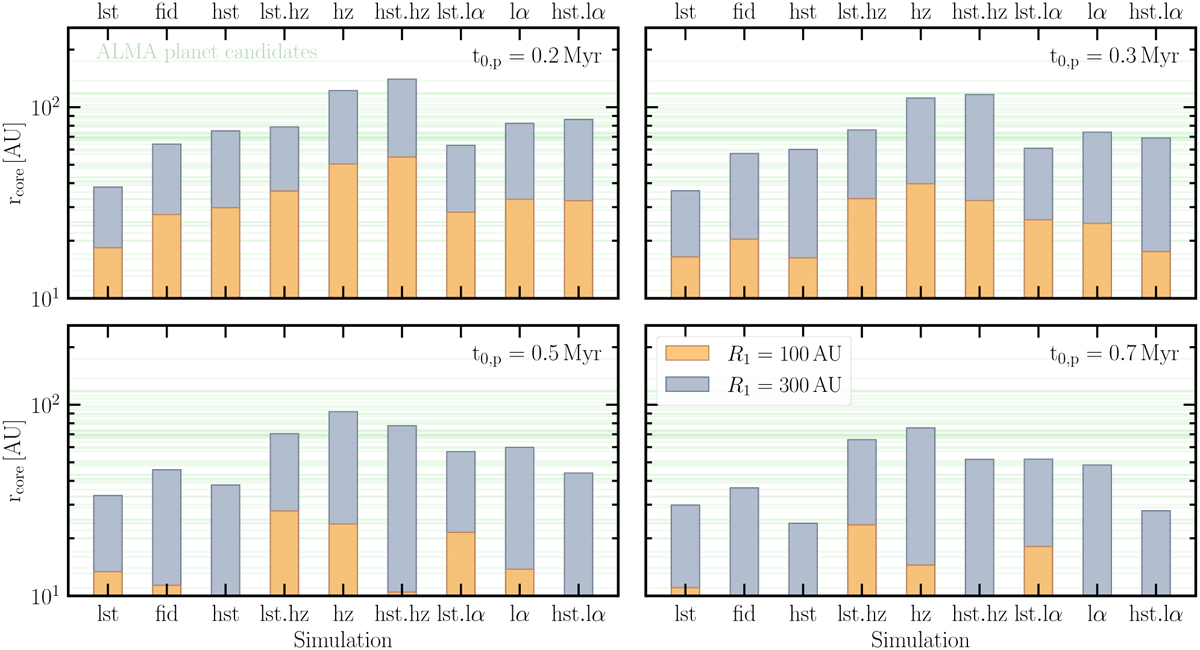Fig. 8

Download original image
Location of the furthest cores formed by reaching Miso, marked by the height of the colored bar, for different scenarios (specified in Table 2) and for protoplanets initialized at different formation times, t0,p, in each panel. Horizontal green lines in the background illustrate the location of the observed gaps in protoplanetary disks that could be caused by planetary cores placed in the same location (Data from http://ppvii.org/chapter/12/figure7.txt/). Whent0,p = 0.2 Myr (top-left panel), favorable disk parameters for forming distant cores up to ~ R1/2 are high St, high Z0 and low αt. “hst” runs with St = 0.06 also show that when initial protoplanets are injected late (t0,p > 0.5 Myr, bottom panels) in disks with R1 = 100 AU, the pebble flux by that point is too weak to grow wide-orbit cores. We note that for R1 = 300 AU, the t0,p = 0.7 Myr case is more consistent with the pebble growth timescale in outer disk (see Fig. 2). Overall, many observed gaps in protoplanetary disks could be caused by planetary cores, but the most distant gaps could only form in disks with high initial metallicity and a large disk size (see Sect. 5.2 for discussion).
Current usage metrics show cumulative count of Article Views (full-text article views including HTML views, PDF and ePub downloads, according to the available data) and Abstracts Views on Vision4Press platform.
Data correspond to usage on the plateform after 2015. The current usage metrics is available 48-96 hours after online publication and is updated daily on week days.
Initial download of the metrics may take a while.


